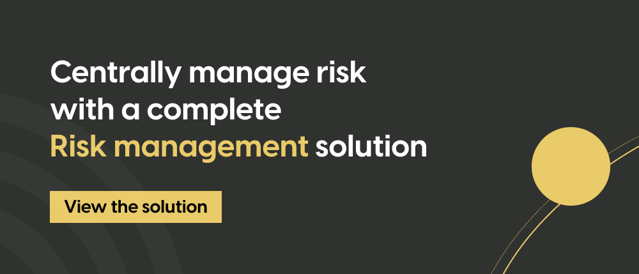About a year ago, we reflected on 2022’s treasury management trends which revealed that topics such as digitalization, payment efficiency, security, cash forecasting, and treasury & IT alignment were important topics to treasurers worldwide.
Our customers’ insights, in combination with various trend reports, market analysis, and expert input, have shown that many of these areas remain important in 2023, but that some priorities have shifted due to political instability, technological advancements, and global economic insecurity in international markets.
As a finance and treasury professional, you need to be aware of the following treasury management trends for 2023:
- Increasing market risk & economic volatility
- The future of APIs
- Recruitment difficulties
- Importance of treasury technology
- Cash flow forecasting is a must
- Automation will be key
- Security to become even more crucial
- Payment hubs are on the rise
- The changing role & responsibilities of treasurers
1. Increasing market risk & economic volatility
2022 has been a volatile year with high inflation, increasing interest rates, and unstable FX rates. This trend will certainly continue to affect treasurers in 2023 as the economy remains shaky. Therefore, it should be a top priority for treasurers to include the consequences of these volatile trends in their company’s cash flow planning.
The Federal Reserve plans to increase interest rates to around 5.5% in 2023. Given the current situation, it seems likely that Europe, and some other parts of the world, will follow a similar hike. Consequently, any company with bank loans or searching for bank funding needs to be prepared to pay higher interest rates which can significantly impact cash flows.
We have also seen that inflation can affect a company’s finances. A good example is the increasing prices that energy companies are dealing with. If their contracts with suppliers expired, they could suddenly pay premium prices because of the differing costs included in the new arrangements. This negatively impacted profitability, leaving some energy companies without cash to fund short-term liabilities. On the other hand, energy companies with longer-term contracts have benefited from inflation because they still have old purchasing prices while benefiting from price increases to their customers, increasing profit margins.
FX rates have changed over the past months, a trend that will likely continue in 2023. Mainly multinationals will feel the effects of this because they often hold cash or conduct trades in many different currencies. If trading occurs with unfavorable FX rates, it can negatively impact forecasted cash flows, whereas favorable FX rates can positively impact cash flows.
2. The future of APIs
Application Programming Interfaces (APIs) are slowly becoming a buzzword in treasury management. The question related to APIs that often arises is whether treasurers should start embracing banking APIs for connectivity purposes, for instance.
To answer this question, we have noticed a common pattern: small- and medium enterprises do not have the resources to build and maintain APIs on their end, especially since every bank requires a different API. Larger enterprises sometimes can do so, but with tens of banks they typically opt for bank connectivity solutions. The ideal solution would be to have one type of API that all banks start utilizing; however, this has yet to be the case. Whether APIs become groundbreaking in treasury management in 2023 remains to be seen, but they will be on the trends agenda without a doubt.
3. Recruitment difficulties
Recruitment is a trend that is relevant to any treasury team today. Unfortunately, it is incredibly challenging to find skilled treasurers in the current job market. The result of this is that many treasury departments are understaffed. In 2023, businesses will need to focus on the recruitment process and finding skilled people to tackle labor shortages.
4. Importance of treasury technology
Technology has become a high priority for every treasury department over the past years. The more digitalized processes become, the more significant the stake that technology has in treasury becomes. 2023 will shape the role of technology in treasury even further. Most technologies provide greater automation and efficiency and make treasury management more reliable since they automatically consolidate data from various sources.
Companies with complicated setups, including several banks, an ERP system, and other financial systems, can usually not go without treasury technologies. 2023 will show us how technologies will further advance and can be leveraged to action treasury operations from a centralized interface. One of the trends in technology that we are seeing is that vendors offer best-of-breed solutions, allowing companies to only pick those solutions that they really require rather than buying an entire treasury management system from the get-go.
5. Cash flow forecasting is a must
Cash flow forecasting is naturally always a priority for treasurers, but especially so in 2023. We have learned in 2022 that volatile markets, political tensions, and economic instability can quickly impact your cash flows. As a result, treasurers must constantly analyze how various circumstances affect their future cash projections to mitigate risk and ensure business continuity in 2023.
6. Automation will be key
Automation is set to play a big role in 2023. Treasurers are automating routine tasks wherever possible, and manual systems like Excel are becoming obsolete when there is more data from several source systems.
Manual work in treasury processes goes paired with an increase in errors, and automation typically provides more reliable outcomes. Usually, the deployment of software such as a treasury management system helps with automating tasks like data consolidation, analyses and reporting, and processes such as payments, trade finance, liquidity management, and cash flow forecasting.
We have especially observed automation advancements in guarantee management technologies, where some solutions offer end-to-end guarantee processes to be managed from a single tool, and stakeholders are notified to complete tasks based on their role in the guarantee process.
7. Security to become even more crucial
Security in treasury management is an unavoidable topic for 2023. Financial fraud and phishing scams continue to make the headlines globally, and regulations and compliance require companies to have all essential security measures in place. For treasurers, this means partnering up with IT & security as well as the relevant vendors to enhance security.
For treasury operations, there are several solutions available to mitigate fraudulent or erroneous payments. For example, with the help of rule-based engines and algorithms, payment solutions can filter out payment duplicates, errors, or even fraudulent payments. On top of that, sanctions screening can be enabled in payment platforms to ascertain that payments are not going through to the wrong parties.
8. Payment hubs are on the rise
Payment hubs and payment factories are on the rise for treasurers. Executing and verifying payments has traditionally been a manual job that requires a lot of resources. Nowadays, payment processes can be automated with the help of payment hubs and factories.
Payment hubs can automate, manage, and centralize local, cross-border, and global payments. They can connect ERPs, financial systems, and banks to process outgoing payments for accounts payable, treasury, payroll, and manual payments and gain more visibility and control over where your cash is going.
Some solutions offer payment reconciliation on top of that, which helps automate matching bank statements with transaction data. As a result, the posting process is automated and minimizes the mismatch between your general ledger cash and bank vs. external bank account balances.
9. The changing role & responsibilities of treasurers
The role of treasury management in the organization is changing. A lot of the work that treasury is doing is affected by other departments internally, as well as banks. Therefore, treasurers need to engage more with different departments and external stakeholders to ensure that the information they receive is on time and accurate.
The treasury team is also one of the few departments that possesses all the relevant financial data to steer a business in the right direction, whether it is for mitigating risk or commercializing potential opportunities. It is the treasurer's job to communicate the insights they derive from analyses as well as possible to the leadership team to ensure the business follows the right path.
The common themes in global treasury management trends
We can identify several common themes for 2023’s treasury trends. First, most trends are about aiming for efficiency through process automation and automatic data consolidation. Second, treasurers must manage financial risk and establish accurate cash flow forecasts during uncertain economic times globally. Third, treasury departments need to embrace new technologies and new ways of working. Last, recruitment difficulties and treasury security are topics that today’s treasury departments should address.








.png?width=60&name=Kaufmann-Anja%20(1).png)